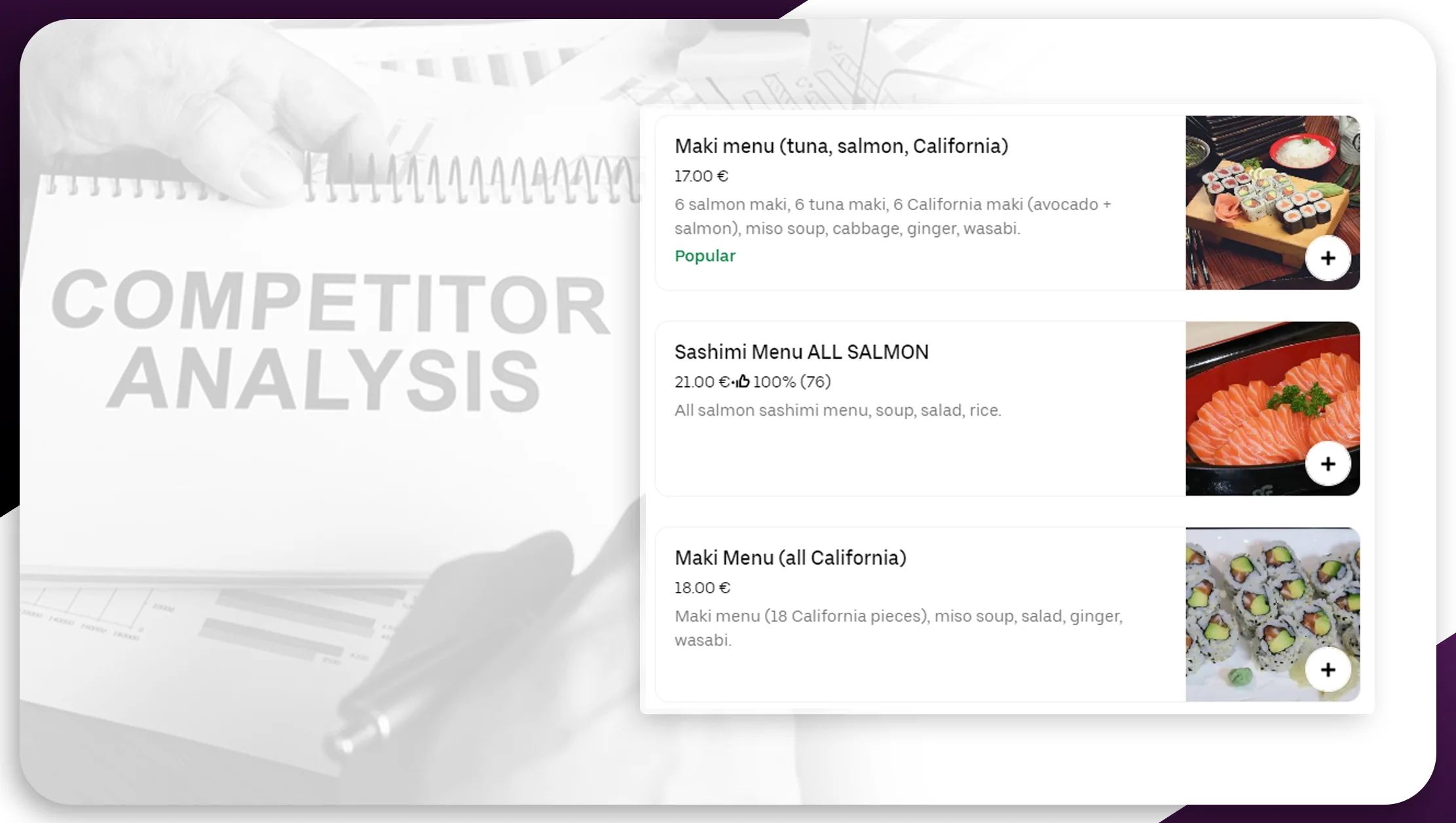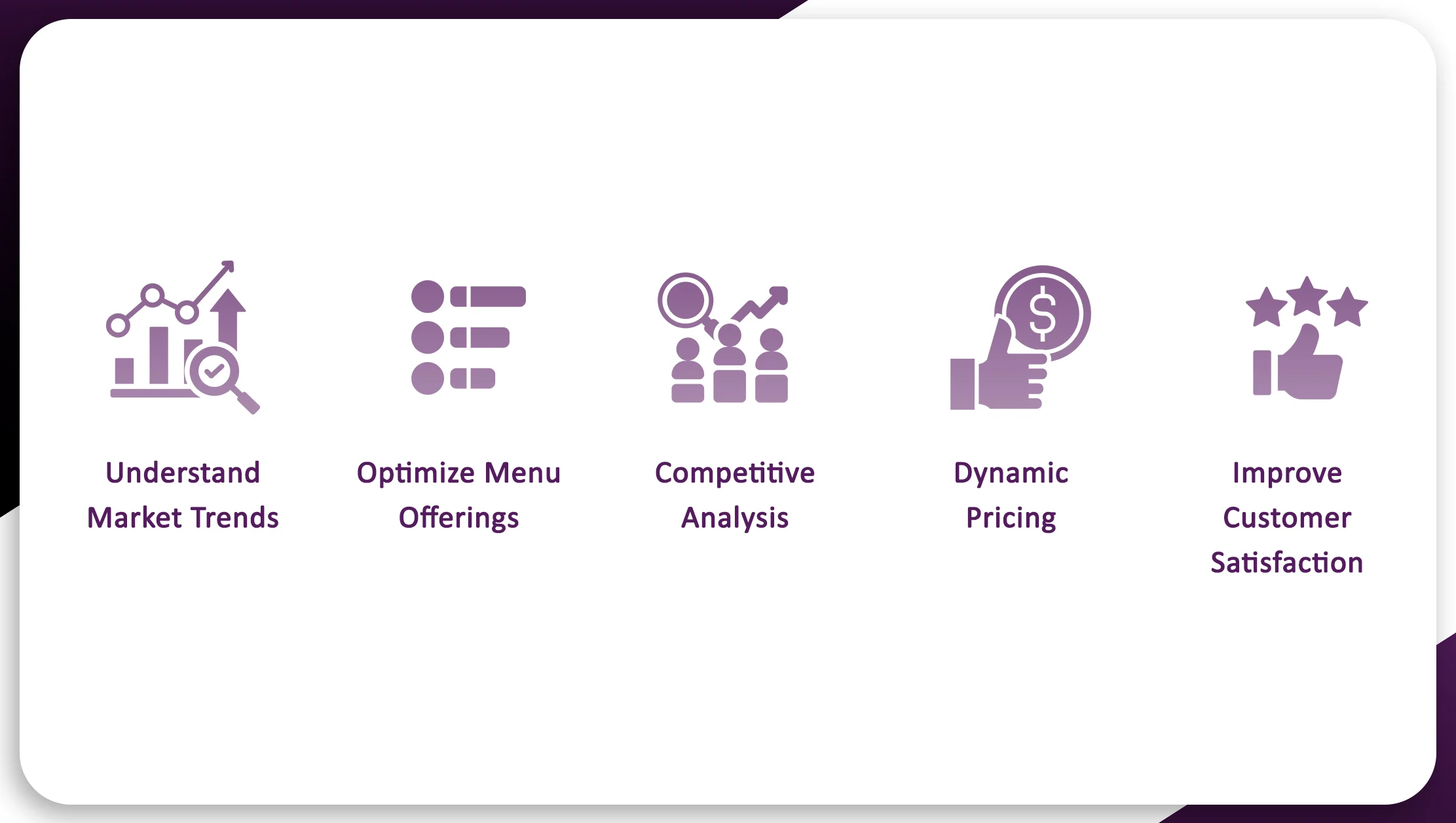

Introduction
In the dynamic world of food delivery, staying competitive requires more than just a tasty menu. To truly stand out, restaurants need to understand market trends, customer preferences, and competitor strategies. One powerful tool for achieving this is to scrape food delivery data . By harnessing this data through food and delivery data scraping services, businesses can make informed decisions to enhance their menu offerings, optimize pricing, and ultimately improve customer satisfaction. This comprehensive guide will walk you through the process of scraping food delivery data, its benefits, use cases, and best practices for extracting valuable insights with food delivery data scraping.
The Importance of Scraping Food Delivery Data

In today's competitive food delivery landscape, staying ahead of the curve requires more than just offering delicious meals. To effectively cater to customer preferences and optimize business operations, restaurants and food delivery services must harness the power of data. Scraping food delivery data provides valuable insights that are essential for making informed decisions.
Food delivery data scraping allows businesses to collect and analyze a wealth of information from various food delivery platforms. This includes customer reviews, menu items, pricing, and competitor strategies. By extracting food delivery data, restaurants can gain a deeper understanding of market trends and customer behavior. This data-driven approach helps in refining menu offerings to match customer tastes and demands.
Food delivery data collection is crucial for monitoring competitor pricing and offerings. By consistently scraping food delivery data, businesses can keep track of competitors' menus and pricing strategies. This enables them to adjust their own offerings and prices to remain competitive in a rapidly changing market.
Food delivery data extraction also supports dynamic pricing strategies. With real-time insights into competitor pricing and market trends, restaurants can implement flexible pricing strategies to maximize revenue and attract more customers.
Moreover, extracting food delivery data helps in identifying popular dishes and seasonal trends, allowing businesses to update their menus accordingly. This not only enhances customer satisfaction but also drives repeat business.
In essence, food delivery data scraping is a powerful tool that equips restaurants and food delivery services with the information needed to thrive. By leveraging this data, businesses can make strategic decisions that improve their menu offerings, optimize pricing, and stay ahead of the competition.
Statistics on Food Delivery Data Scraping

Growth of Food Delivery Market: The global online food delivery market was valued at approximately $107 billion in 2023 and is expected to reach $154 billion by 2027, growing at a CAGR of 7.2% (Source: Statista).
Consumer Preferences: A survey by PYMNTS found that 40% of consumers use food delivery apps regularly, with a significant preference for platforms offering diverse menu options and competitive pricing.
Competitive Analysis: According to a report by CB Insights, 65% of successful food delivery startups use data-driven strategies to gain insights into market trends and competitor activities.
Benefits of Scraping Food Delivery Data

Understand Market Trends: Scraping food delivery data helps identify popular trends, such as emerging cuisines, dish preferences, and seasonal variations. This information can guide menu development and promotional strategies.
Optimize Menu Offerings: By analyzing data on popular dishes and customer reviews, restaurants can refine their menu to include high-demand items and eliminate underperforming ones.
Competitive Analysis: Scraping competitor data provides insights into their menu offerings, pricing strategies, and customer feedback, allowing restaurants to adjust their own strategies to stay competitive.
Dynamic Pricing: With real-time data on competitors' pricing, restaurants can implement dynamic pricing strategies to optimize revenue and attract more customers.
Improve Customer Satisfaction: By analyzing customer reviews and ratings, restaurants can identify areas for improvement in their dishes, service, and delivery processes.
How to Scrape Food Delivery Data
1. Identify Your Data Sources

Start by identifying the food delivery platforms from which you want to scrape data. Popular platforms include:
• Uber Eats
• DoorDash
• Grubhub
• Postmates
• Deliveroo
Each platform has its own website or API that you can target for data collection. Determine which platforms are most relevant to your business and focus your scraping efforts there.
2. Choose Your Scraping Tools

To effectively scrape food delivery data, you need the right tools. Here are some commonly used scraping tools:
Beautiful Soup: A Python library for parsing HTML and XML documents. Ideal for simple scraping tasks.
Scrapy: An open-source web crawling framework for Python. Suitable for more complex scraping projects.
Selenium: A tool for automating web browsers. Useful for scraping dynamic content that requires user interaction.
3. Define Your Data Requirements
Before scraping, clearly define what data you need. Common data points include:
Menu Items: Names, descriptions, and prices of dishes.
Customer Reviews: Ratings, comments, and feedback.
Competitor Pricing: Prices of similar dishes from competitors.
Delivery Times: Estimated delivery times and availability.
4. Implement Your Scraping Strategy

Access the Data Source: Use web scraping libraries or APIs to access the data. For websites, you’ll need to analyze the site structure to identify relevant HTML elements.
Extract Data: Write scripts or use scraping tools to extract the data points you’ve defined. Ensure that you handle pagination and dynamic content effectively.
Store Data: Save the scraped data in a structured format, such as a CSV file, database, or cloud storage. This will facilitate analysis and reporting.
Analyze Data: Use data analysis tools like Excel, Python (Pandas), or specialized analytics platforms to analyze the scraped data. Look for trends, patterns, and insights that can inform your menu decisions.
5. Handle Legal and Ethical Considerations

Scraping food delivery data must be done with consideration of legal and ethical issues:
Compliance: Ensure that your scraping activities comply with the terms of service of the websites you are targeting. Violating these terms can lead to legal consequences.
Respect Privacy: Avoid scraping sensitive or personal data. Focus on public data and aggregate information.
Use Proxies: To prevent being blocked, use proxies or IP rotation to distribute your requests.
Real-World Use Cases

Menu Optimization for Restaurants
A restaurant chain wants to enhance its menu offerings. By scraping data from multiple food delivery platforms, it identifies popular dishes and customer preferences. This information helps the restaurant refine its menu, introduce new items, and discontinue underperforming ones.
Competitive Pricing Strategy
A new food delivery startup wants to enter the market with a competitive edge. By scraping pricing data from established competitors, the startup can set its prices strategically, offering competitive rates while maintaining profitability.
Identifying Market Trends
A food delivery service provider scrapes data from various platforms to identify emerging food trends. This insight allows them to partner with popular restaurants and promote trending dishes, driving more traffic to their platform.
Improving Customer Experience
A restaurant uses customer reviews and feedback collected through scraping to identify common complaints and areas for improvement. By addressing these issues, the restaurant enhances its overall customer experience and satisfaction.
Best Practices for Scraping Food Delivery Data

Regular Updates: Food delivery data can change frequently. Schedule regular scraping to keep your data current and relevant.
Data Quality: Ensure that your scraping scripts are designed to handle errors and inconsistencies in the data. Implement data cleaning processes to maintain accuracy.
Ethical Scraping: Always adhere to ethical guidelines and respect the terms of service of the websites you are scraping.
Leverage Advanced Analytics: Use advanced analytics tools to derive actionable insights from the scraped data. This can help you make more informed decisions and stay ahead of the competition.
Conclusion
To scrape food delivery data is a valuable tool for restaurants and food delivery services looking to enhance their menu offerings and gain a competitive edge. By leveraging this data, businesses can optimize their menu, implement effective pricing strategies, and improve customer satisfaction. However, it's crucial to approach food and delivery data scraping services with care, adhering to legal and ethical guidelines while utilizing the latest tools and technologies. Properly extracting food delivery data ensures you make informed decisions that enhance your offerings and drive success.
Whether you’re a restaurant owner aiming to refine your menu or a food delivery service looking to understand market trends, food and delivery data scraping services provide the insights you need to succeed in a competitive landscape. Extracting food delivery data allows you to stay ahead by making data-driven decisions that enhance your offerings and operations. Embrace the power to scrape food delivery data with Real Data API and transform your food delivery strategies for a more successful and customer-centric approach. Get started with Real Data API today and unlock valuable insights for your business!














